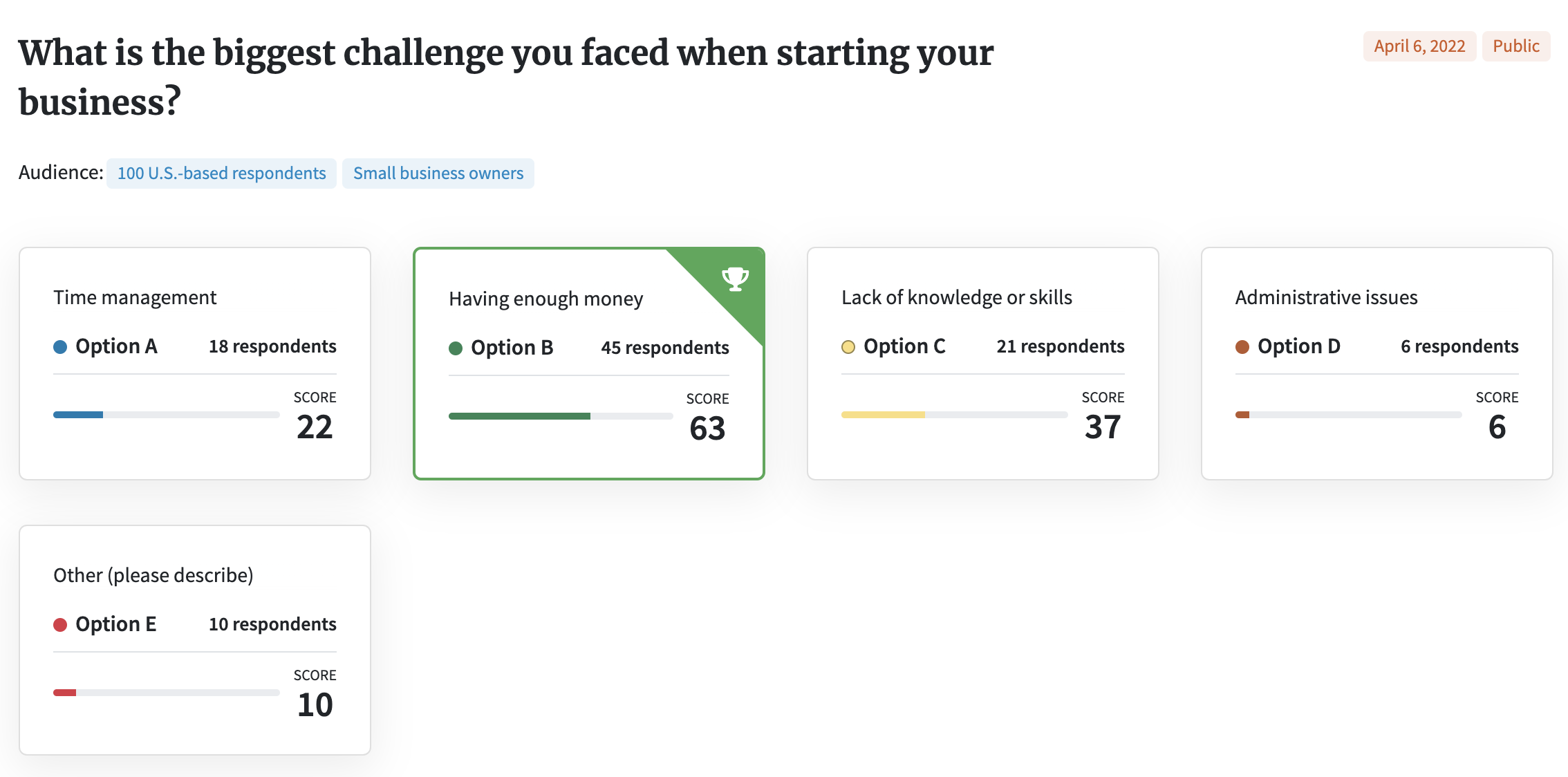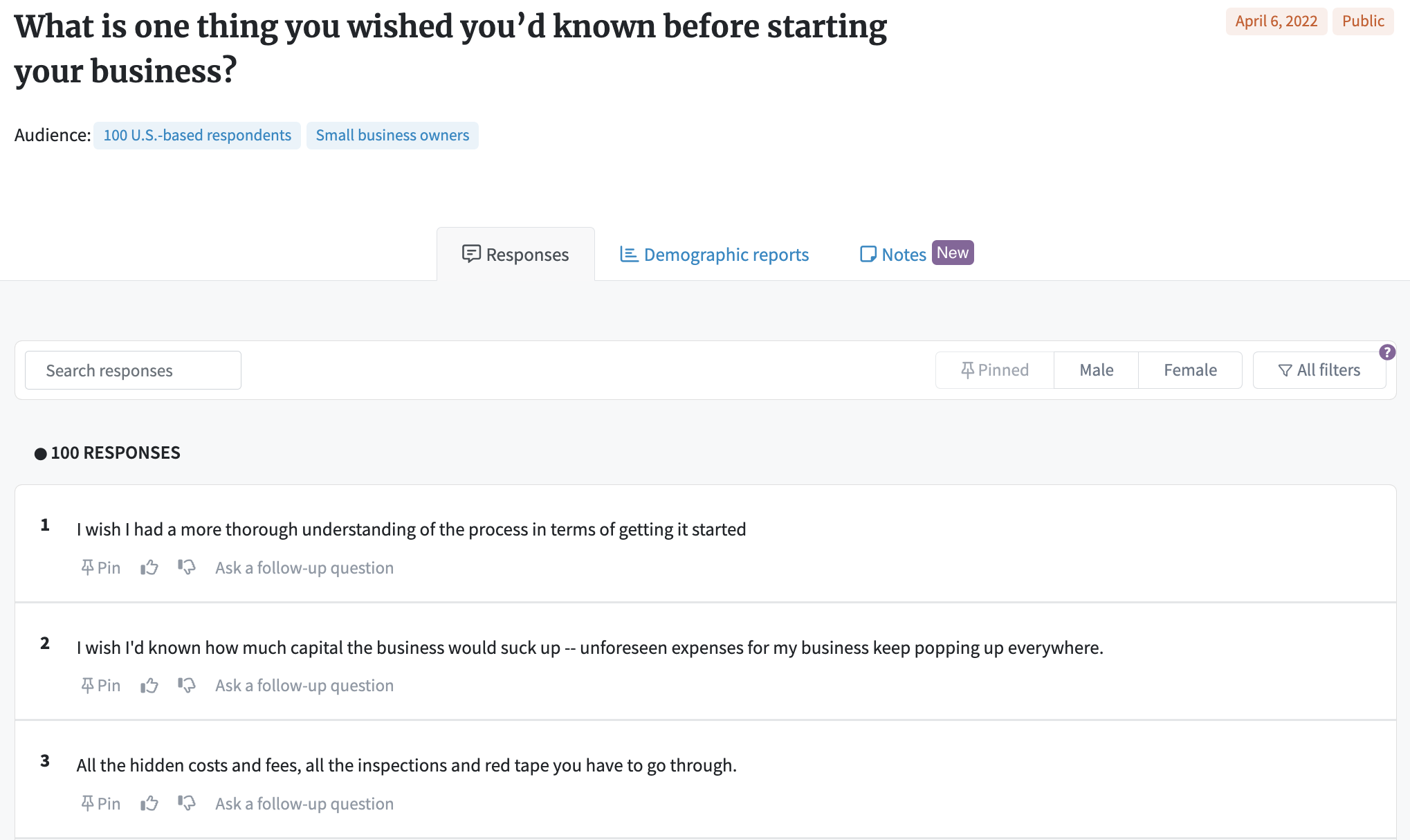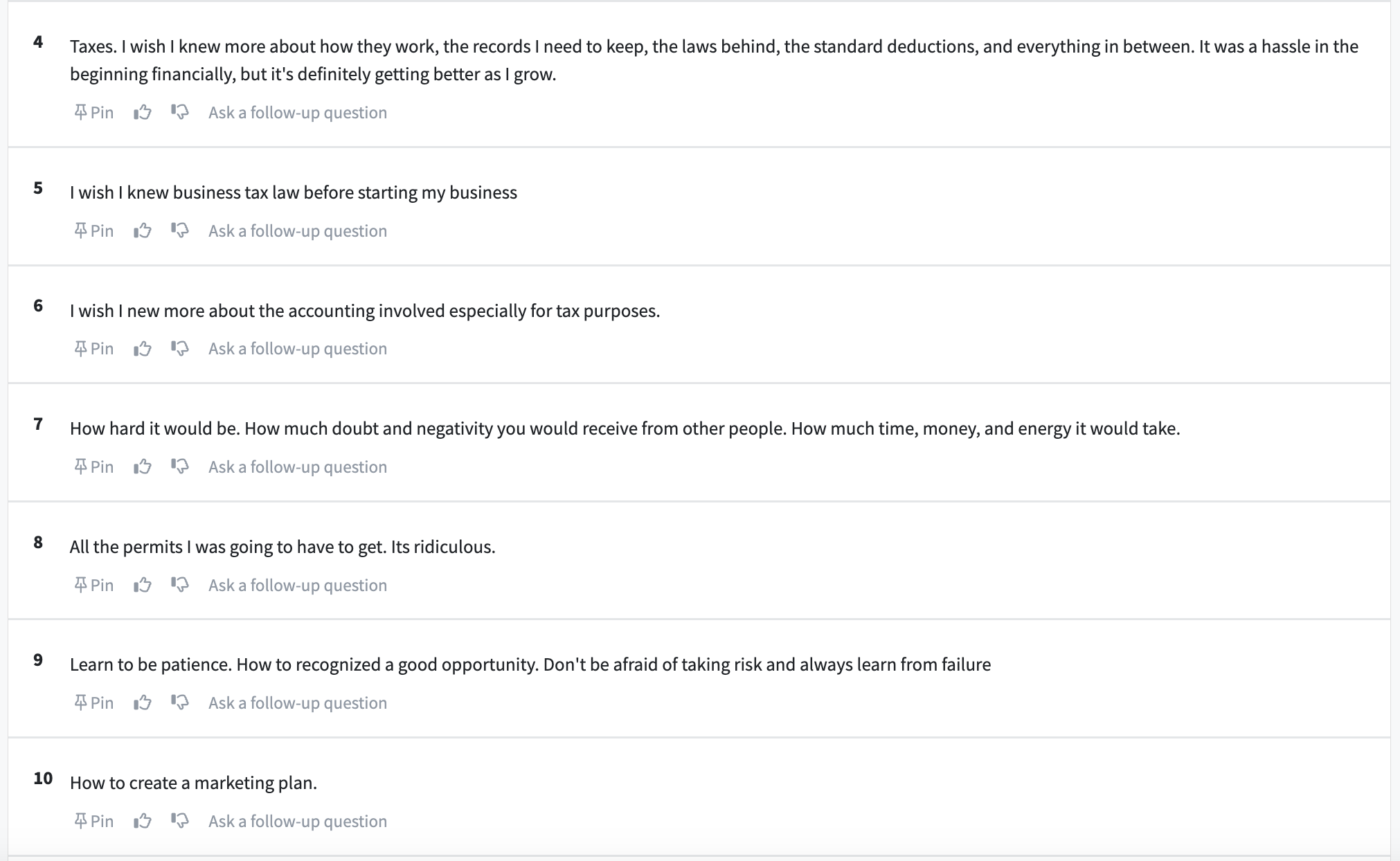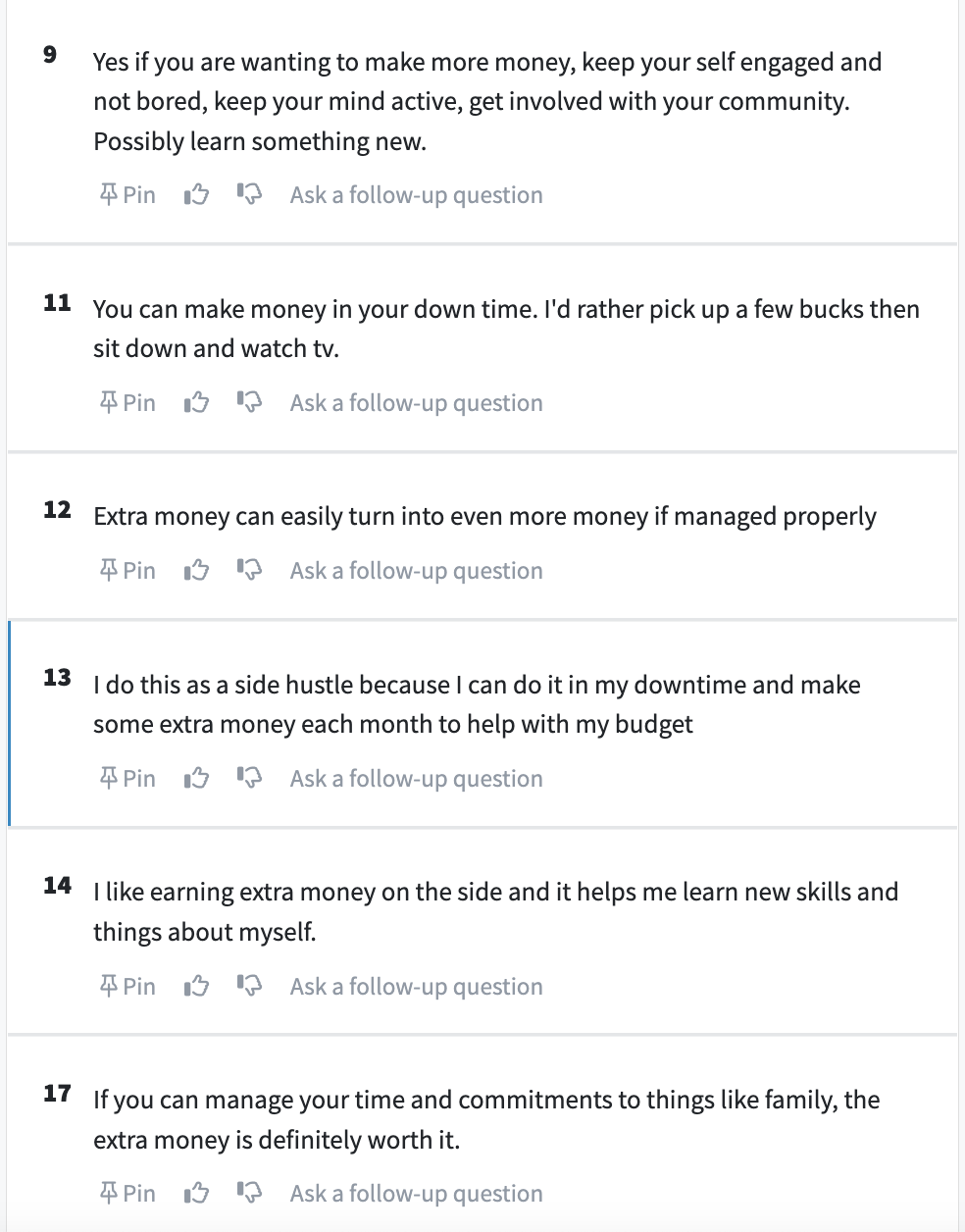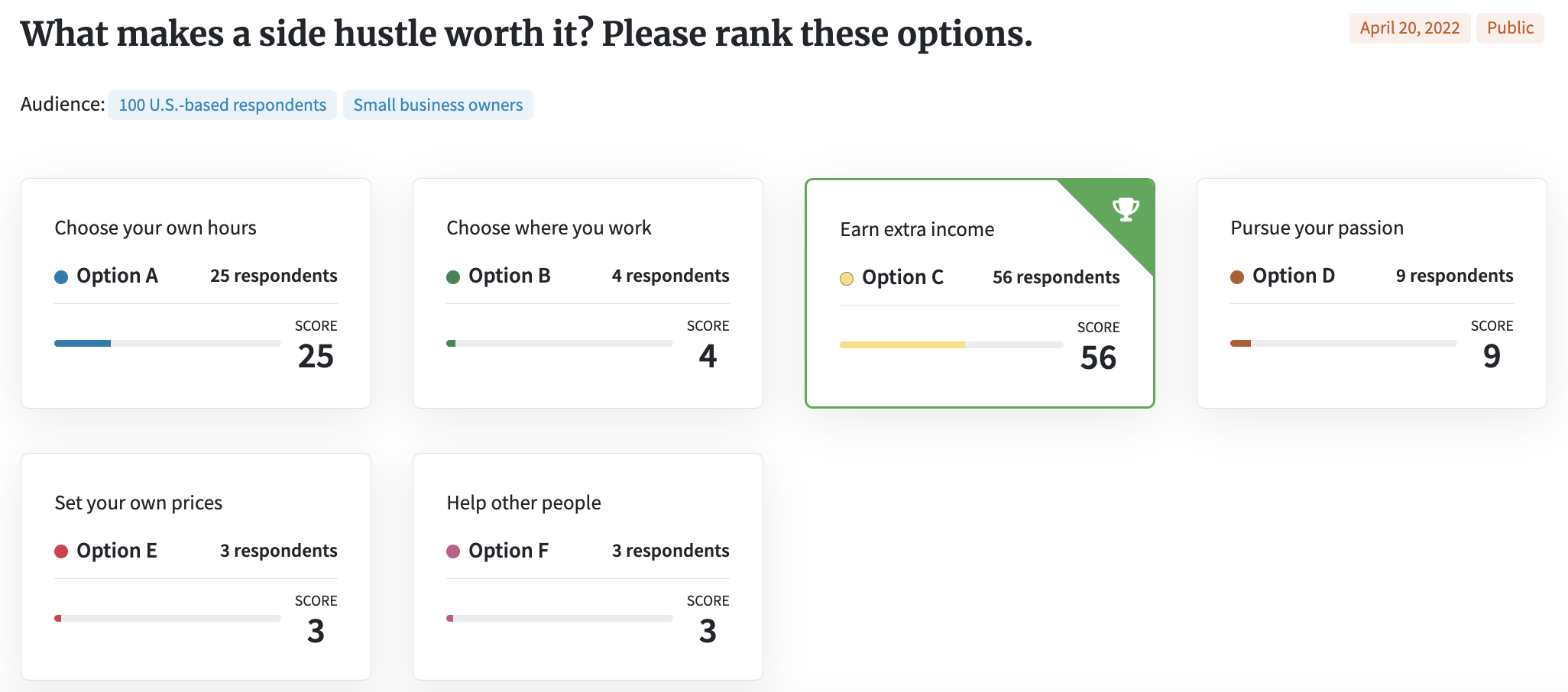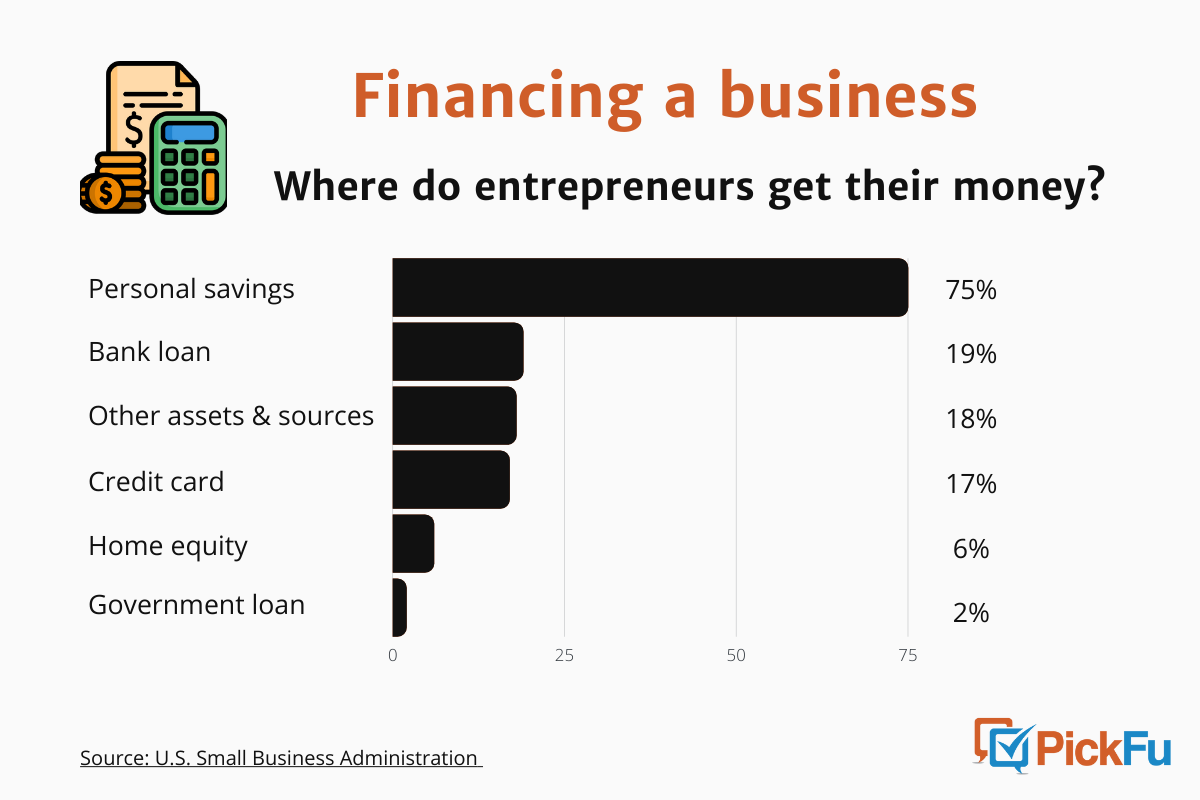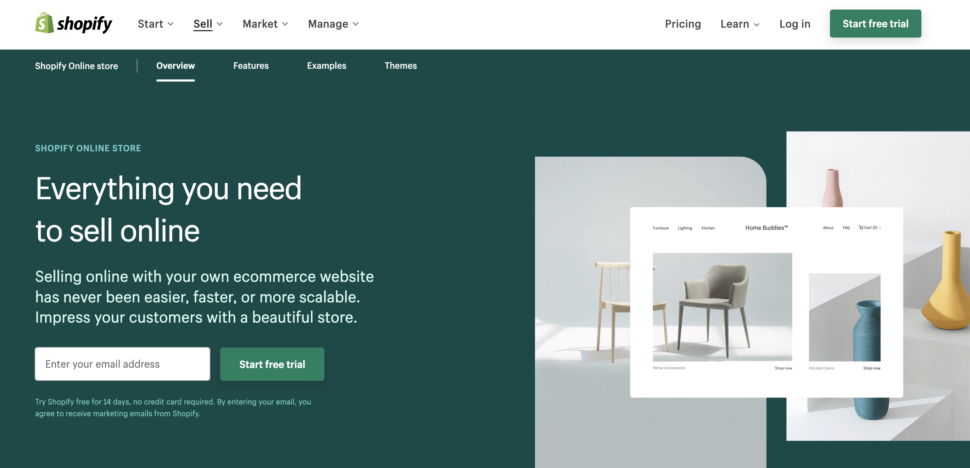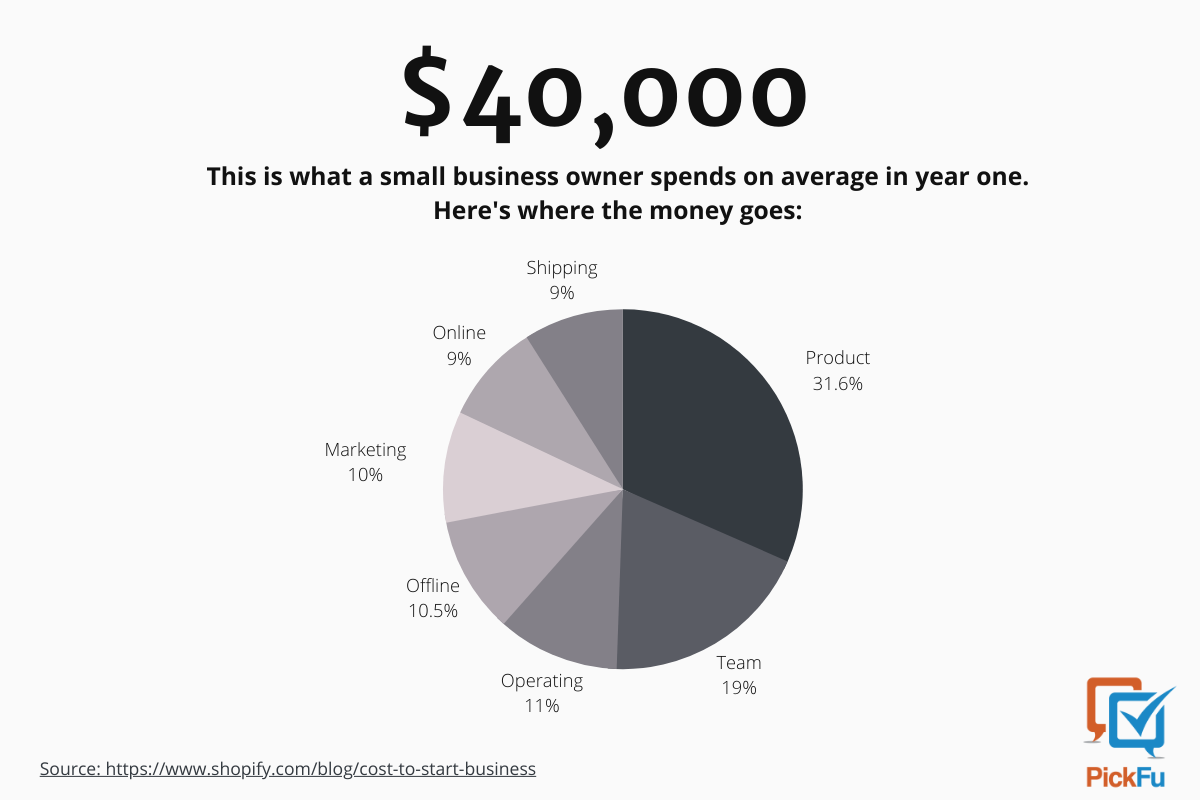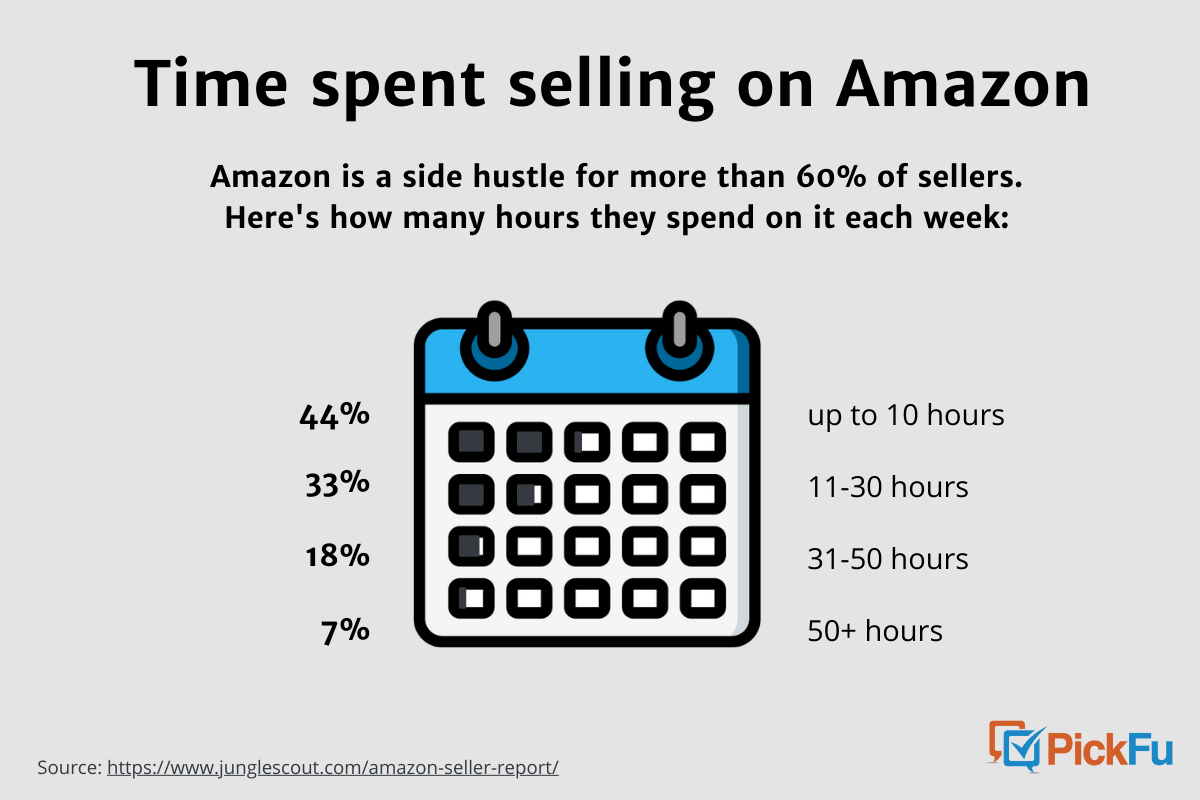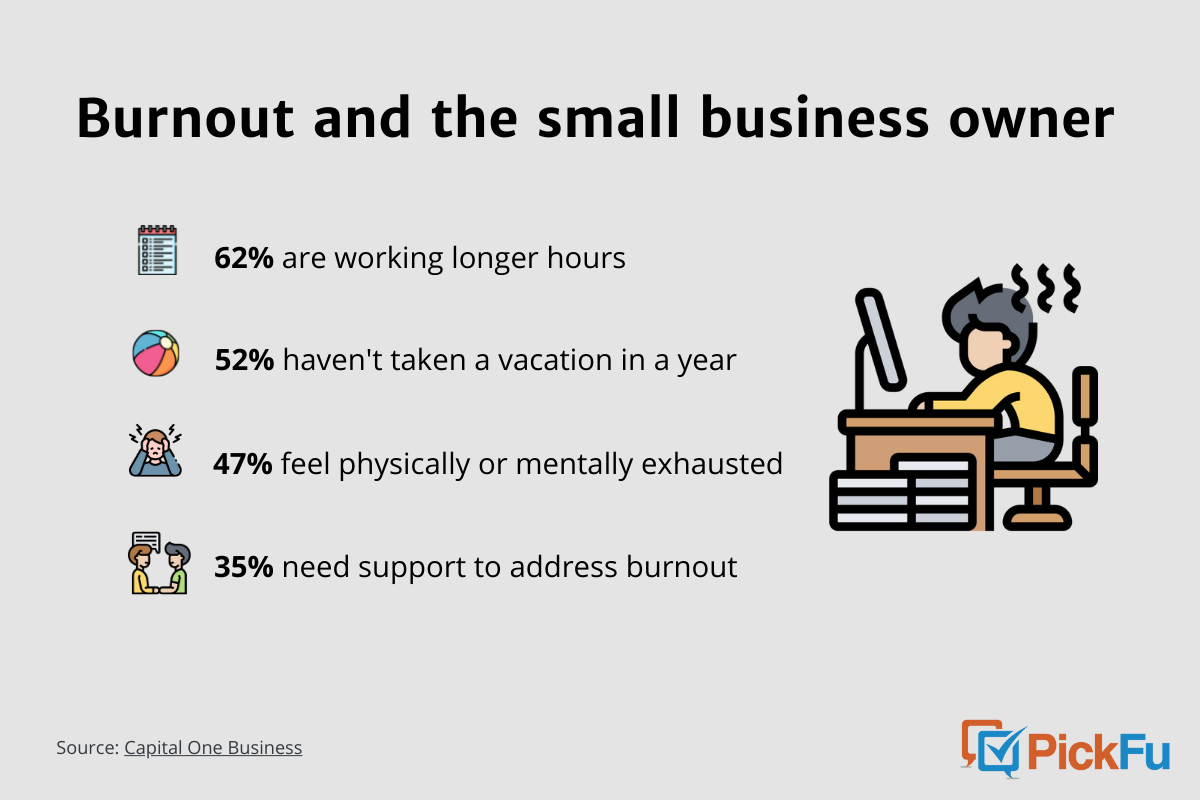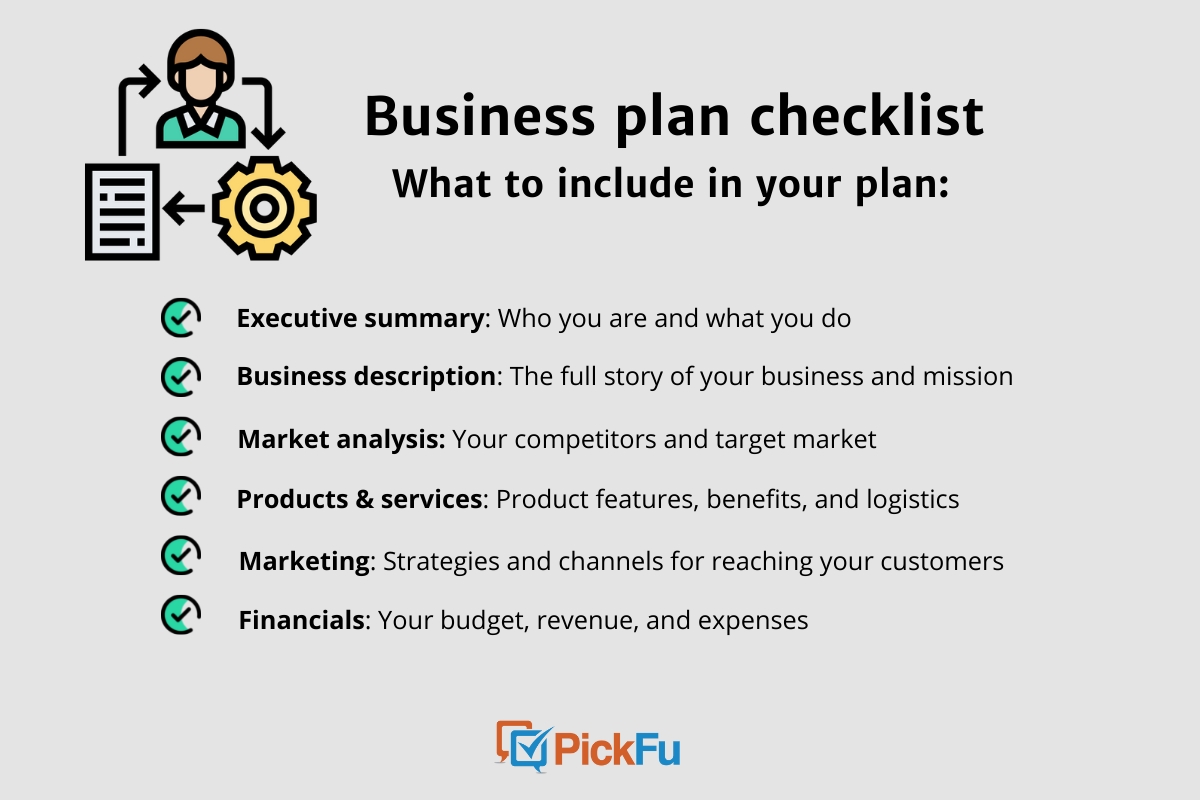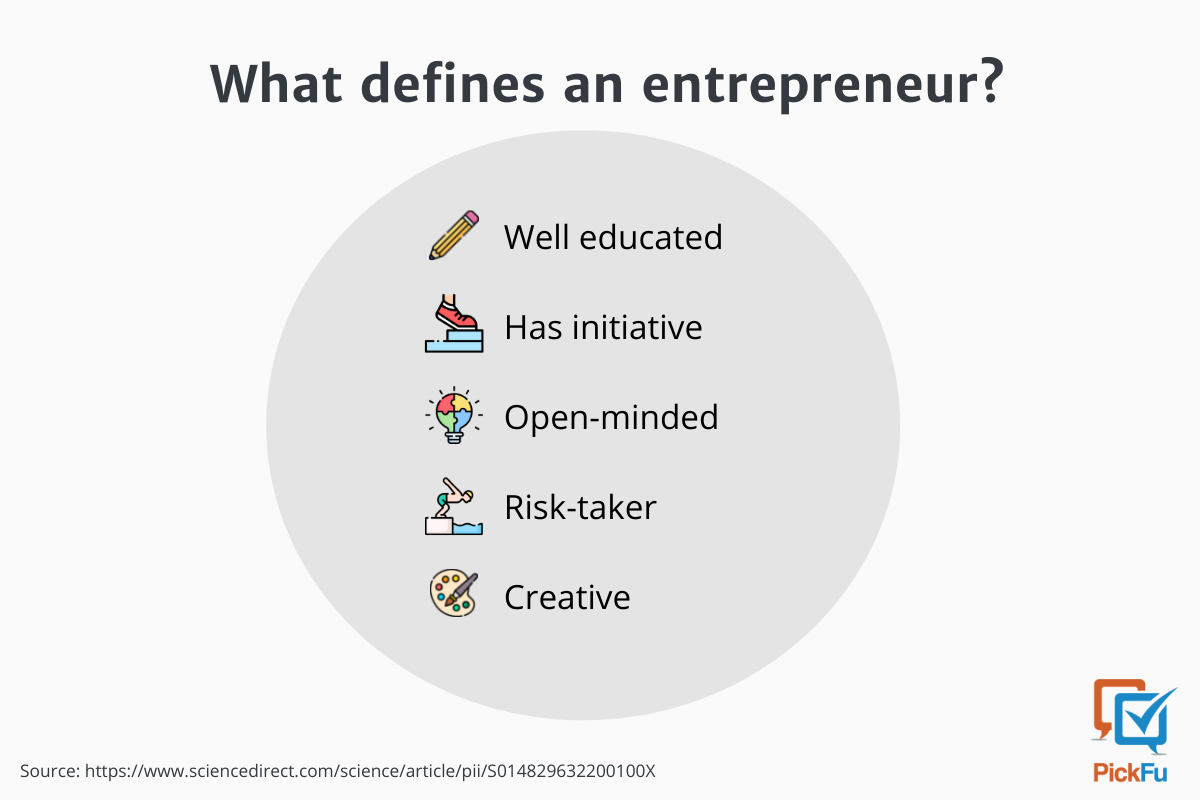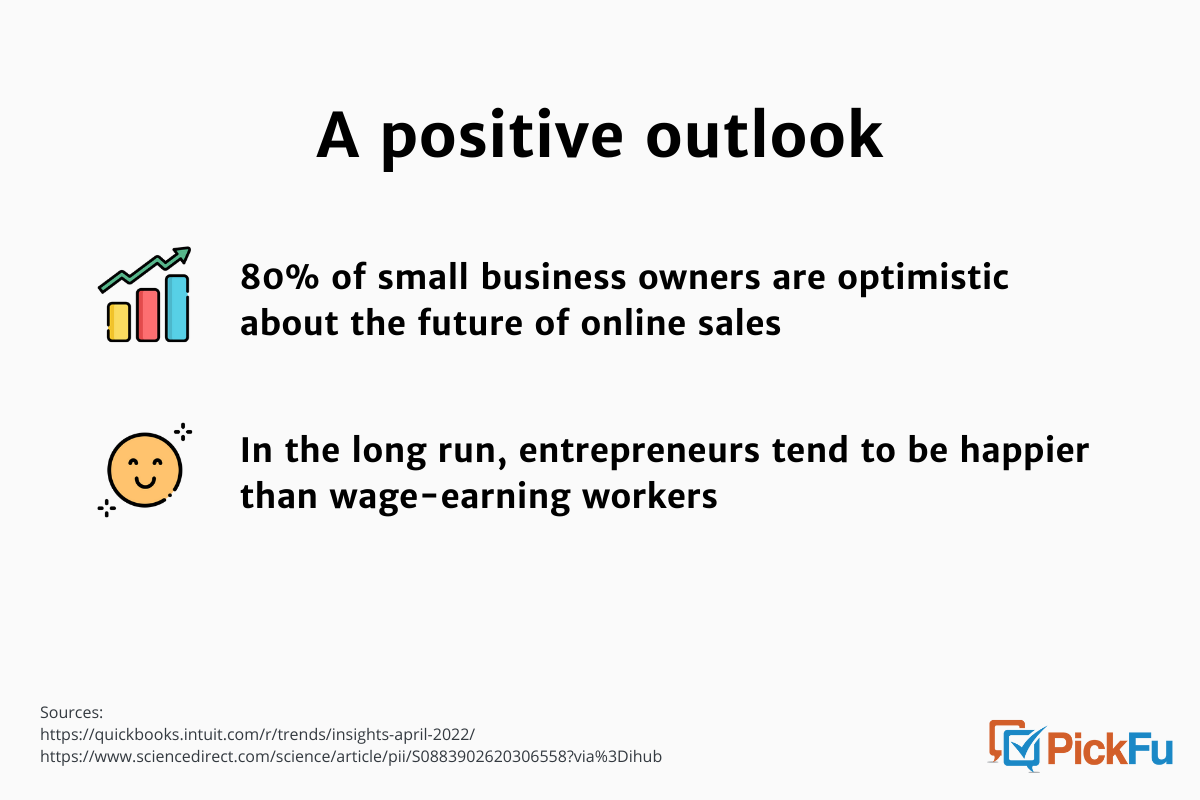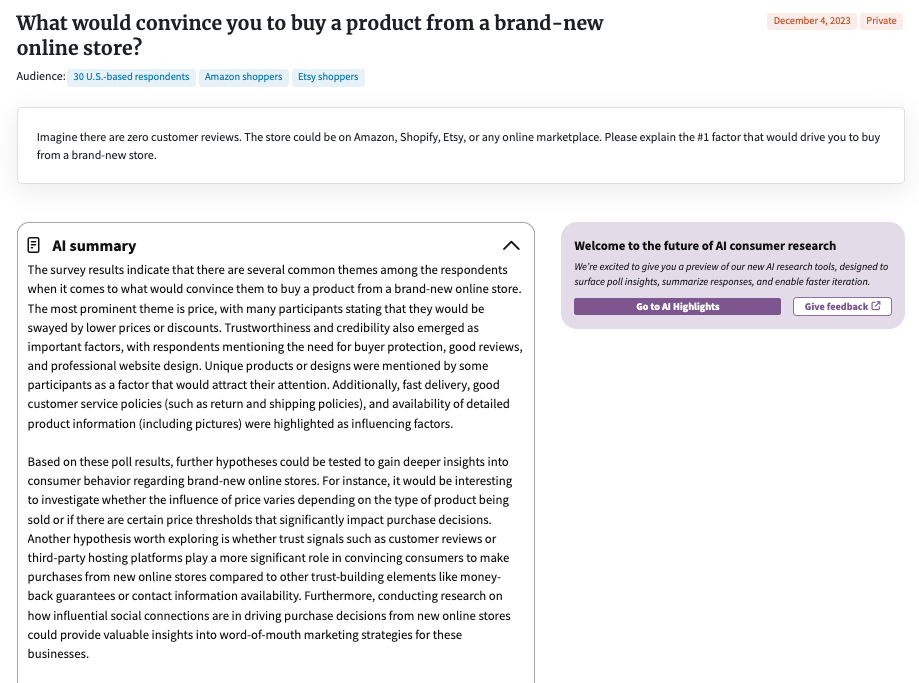Are you thinking of getting into e-commerce and wondering if it’s worth it? Yeah, so is my mom.
She’s not looking to join the 45% of Americans who have a side hustle. She’s retired.
But this isn’t totally out of character for her, either. A former nurse, my mom owned a brick-and-mortar gift shop years ago before pursuing a career in the financial industry. She’s also quite the online consumer.
You might have a similar story. But before you (or Mom) go all in, let’s back up and answer this question: should you start an e-commerce business?
Today, we’re going to break down the time, money, and effort it takes to get into e-commerce so that you can decide if it’s worth it.
What small business owners wish they’d known about entrepreneurship
Startup life has its upsides, whatever your industry: flexibility, being your own boss, pursuing your passion.
But whether you’re setting up an e-commerce business, a brick-and-mortar, or a hybrid of both, it also comes with plenty of headaches. Just take it from 100 small business owners we polled about the challenges they faced when starting their business.
63% said having enough money was their main hurdle, followed by not having the knowledge or skills, managing their time, and dealing with administrative tasks.
They also mentioned various other not-insignificant issues, such as finding their customer base.
“Being undercapitalized was by far the biggest challenge. There were so many unexpected expenses coupled with the uncertainty of income. It was by far the biggest challenge of being self-employed,” said one respondent.
Expect the unexpected, in other words. But if there’s one thing to know before you launch your business, what would that be?
We polled another 100 small business owners to find out.
Again, the issue of money topped the list. Nearly half of respondents said they wished they were more financially savvy before starting, especially regarding accounting and taxes.
Looking through their responses, I found several other themes. Respondents wished they’d known:
- How much time and hard work it takes to start a business
- The amount of red tape to wade through
- The difficulty of finding and managing employees
- The challenge in getting and keeping customers
They described the self-imposed and external pressures of being the chief decision-maker in visceral detail:
“I wish I had known the amount of sleep I would lose because of how much time it takes to be in charge of something, organize everything, and solve every problem,” one person said.
“How hard it would be. How much doubt and negativity you would receive from other people. How much time, money, and energy it would take,” another wrote.
So what’s the silver lining? Is a side hustle worth all the unknowns, aggravation, and sleepless nights?
It is indeed, according to the results of a third poll we ran.
Of the 100 people surveyed, a whopping 96% said a side hustle was worth it. Only four people said it wasn’t.
“Money” and “income” were among the most common words they used to explain their answers.
Money is clearly a big motivator, but what other factors make a side hustle worth it? What about having control over when and where you work? Being able to chase your dream?
We ran a fourth poll asking people to rank these six options: choose their hours, choose their location, earn extra income, set their prices, pursue their passion, or help others.
And, well, it’s still mostly about the money.
More than half of respondents (56%) say earning extra income matters most, followed by setting their own schedule (25%).
For some, side hustling isn’t optional. It pays the bills – just like these respondents called out:
- “For me making extra income is top priority. I need the money. I also like working when I want. If I want to do a long day or short day, it is my choice. And nothing beats working from home if you can.”
- “As much as I want to pursue my passion, I’m not really at that point yet. When I have made enough to have well into 5 figures in savings, that will be the right time. As of now, the most important thing is that it helps pay the bills and keeps all my finances and my wife’s finances in check.”
The other perks that make a side hustle worth it, such as pursuing a passion, are “icing on the cake,” as one person put it.
The takeaways, at least for the entrepreneurs we surveyed:
Starting a business is worth it, especially for the financial cushion and flexibility it can provide.
For some small business owners, setting up an e-commerce store can be a better choice than a brick-and-mortar business. It offers a way for side hustlers to side hustle without having to rent a storefront, after all. But what hidden startup costs should you look out for?
Let’s get into the nitty-gritty of what it takes to start an e-commerce business.
Is e-commerce worth it?
There’s roughly 2 million Amazon sellers as of late 2023. Should you join them and become an Amazon FBA seller, is it worth it?
You’ll need to ask yourself these questions first.
Do you have the money?
You might be motivated by the idea of earning extra cash from your e-commerce side gig.
But as our polls showed, you’ll need money to launch, more than you probably think. And if you’re like most entrepreneurs, it will be your money.
Three out of four small business owners tap into their savings when starting out.
That number is slightly higher in e-commerce, with 77% of Amazon sellers bootstrapping their ventures.
How much money are we talking about? Roughly 58% of Amazon sellers surveyed by JungleScout say they spent $5,000 or less to get up and running. Another 41% spent up to $10,000 or more to start their business.
To start. Keep those words in mind – upfront costs are only one part of the equation. You also have to account for actually running your business.
Let’s focus on one of the first steps you’ll take: setting up an e-commerce website.
Here are the main areas to budget for:
E-commerce software platform: Shopify and WooCommerce are two popular options. Read more about the pros, cons, and pricing of these platforms in our article on the 5 best e-commerce website tools.
Web hosting: A web host is like your landlord; you pay to have your site’s content live online. All-in-one platforms such as Shopify include hosting in their plans. If you have a self-hosted site, you’ll pay a provider such as Bluehost.
Domain name: This is your store’s web address. You pay to keep your domain name, either as part of your e-commerce software plan or separately if you buy your domain through a third-party provider. We like Google Domains.
(You’ll also pay for an SSL certificate, which keeps your site and your customer data secure and private. Most hosting providers will offer this for free, including Shopify).
Payment processing: This covers your site’s ability to take payments from customers and manage transactions.
It’s hard to put an exact dollar amount on the cost of starting your online store. It depends on your needs and the options you choose.
You can set up a basic shop in Shopify starting at $39 a month. On the flip side, depending on how custom you want to go, you could pay a developer thousands of dollars to create your online store.
You also have to account for production, marketing, technology, legal, and possibly staffing costs, plus unforeseen expenses.For most small business owners, this amounts to an average of $40,000 for their first year in business.
Taxes are a complicated beast, too.
You’ll want to stay on top of your e-commerce sales tax obligations — or hire someone to do it for you. Even so, you might underestimate how much you’ll end up paying.
Here’s more of what our poll respondents had to say about taxes when starting their business:
- “I wish I would have known more about the tax consequences and tax issues that a small business owner has to deal with. For example, I would want to know how I can reduce my taxes and get more benefits for my business through a proper accounting of the tax law.”
- “I wish I had known how to do all of the taxes involved with being self-employed. I figured it out eventually, but it would have helped to have a resource or someone to answer my questions. The IRS website is so confusing!”
As you can see, there are many variables at play.
This is our best estimate of how much money you’ll need to start your e-commerce business: $2,500. That’s half as much as is the norm, and if that number makes you flinch, then e-commerce may not be right for you right now.
Timing can be everything. Speaking of, that leads us to the next question:
Do you have the time?
Maybe you have visions of running your e-commerce business while sipping a fruity drink in the shade of a palm tree in Costa Rica.
Time to wake up!
I’m not saying you can’t live your best life as an e-commerce seller. But the reality is you won’t be swimming in downtime.
Over half of Amazon sellers – 54% – spend anywhere from 4 to 20 hours a week on their business.
That’s a good chunk of time, considering that 85% of sellers are side hustling on top of their day job or jobs.
Nearly a quarter of side hustlers devote 11-40+ hours a week to their side hustle .
These hustlers spend less time with family and friends and cut back on leisure activities, sleep, and exercise.
This respondent from our second poll put it bluntly:
“When you have your own business, you are never really off. You don’t get vacation days, sick days, personal time, etc.”
Time is money, after all. Your products don’t sell themselves.
Whether you’re selling your own products or dropshipping through a supplier, you’ll need to juggle:
- Manufacturing and inventory
- Fulfillment and shipping
- Customer service
- Digital marketing
- Social media
- Search engine optimization (SEO)
Writing Amazon product descriptions alone is a critical task that takes time, research, and testing.
Even after you’ve “made it,” the work of optimization doesn’t stop.
Take our case study of Thrasio, a top Amazon aggregator. Thrasio took Angry Orange, one of its brands, through round after round of split testing with hundreds of consumers to redesign the bottle and label.
You probably won’t have the resources of a Thrasio when starting. Given the demands on your time, the potential for burnout is real.
Nearly half (47%) of small business owners feel drained, physically or emotionally, after two years of struggling through the pandemic, a Capital One survey found.
Many say they’re working longer hours and not taking vacations.
It’s important to know how much you’re willing to sacrifice and what to do to avoid burnout. Here are three steps you can take:
- Go on that vacation and unplug while you’re at it
- Designate work hours and stick to them
- Use automated tools for things like email marketing
Marketing automation not only frees up your time and eases your workload but can also lead to an increase in conversion rates.
Keep that in mind as you plan your e-commerce marketing campaigns — which brings us to this next question.
Do you have a business plan?
You have an idea of what it takes to start an e-commerce business.
But the time and money you put into it won’t be worth it if you don’t have a business plan to guide you.
Making a plan forces you to do a deep dive into market research and idea validation. It sets the framework for your business model, goals, and strategies.
You can find templates online to help you write a business plan.
In general, here’s what to include in your e-commerce business plan:
Executive summary: A high-level overview of who you are and what you do or sell.
Business description: A full description of your company and mission, the problems your product or service will solve, and what makes your e-commerce business unique.
Market analysis: A look at your competitors and an explanation of your target market, with relevant industry data.
Products or services: More specifics about your product’s features and benefits. You might include information on your operations, suppliers, production, and shipping.
Marketing and sales: Strategies for finding and growing your customer base and the channels you plan to use, i.e., Facebook ads, content marketing, an affiliate program, etc.
Financials: A forecast or, if you’ve already launched, hard numbers showing your budget, revenue, and expenses. This is crucial for calculating the value of your e-commerce business if or when you want to exit.
You can’t predict the future (see: the pandemic), but you can prepare by doing your research to create a business plan.
Your plan will help ensure you’re on the right track with your business ideas.
You might decide after crunching the numbers that e-commerce isn’t worth it. Some experts say we can now expect global supply-chain disruptions every three or four years, which will affect e-commerce businesses large and small.
On the other hand, your business plan might give you the push you need to begin.
Are you comfortable with change, risk, and failure?
I’m guessing you’re already a self-starter like my mom.
Do you also take risks? Are you open to new ideas and experiences? Do you value creativity and learning?
Research shows these are the top defining traits of entrepreneurs.
Being open-minded and taking risks doesn’t guarantee your e-commerce business will be successful.
But you might be better equipped to handle the curveballs.
Here’s another thing: entrepreneurs tend to be happier and find deeper meaning in their work than regular wage-earners, research shows. You have good reason to be optimistic about the growth of e-commerce. Nearly 80% of small business owners who sell online and offline feel optimistic, too.
Put in the work on the front end, and you could be among the 68 percent of Amazon sellers who are profitable within a year.
But remember: many startups fail.
So be realistic about how much money, time, and effort you’ll need to start and how much you’ll earn as an e-commerce seller.
And accept that you’ll make mistakes.
What you learn from your mistakes counts the most, whether you end up launching an e-commerce business or you decide it’s not worth it after all.
How PickFu can help your startup succeed
Half of all startups fail within the first five years. Of those startups, roughly 42% fail for one reason: lack of market demand.
In other words? These startups fail because they don’t do their research before they launch a business. They don’t find out if people actually want to buy what they’re selling.
All it takes is a simple idea validation poll on PickFu to find out if there’s a market for your product.
The most important thing to do is pay attention to the results and feedback you get from an idea validation poll. You might have to change your product idea because of it. But that’s a whole lot better than spending thousands on a product that no one will buy.
Once you’ve got a validated product or service ready to go, you can use PickFu to test everything from product images to your ecommerce website. The sky’s the limit.
And you’ll be surprised at how many people take a chance on your brand-new business. We asked 30 Amazon and Etsy shoppers what would convince them to take a chance on a brand-new store with no reviews.
We learned three things:
- If the price is low enough, almost anyone will take a chance on a new store. You can always advertise introductory pricing and raise the cost of your products once you’ve got some buy-in.
- High-quality product images and descriptions matter. The more pictures, the better. Your customers want to see every inch of a product online before they spend money on an unknown brand or store.
- Money-back guarantees can help, too. The less risk on the customer’s end, the better.
TL;DR: Answer these 4 questions to figure out if e-commerce is worth it
Selling online isn’t for everyone. It’s definitely not something to rush into.
To figure out whether e-commerce is worth it, ask yourself these four questions:
- Do you have the money?
- Do you have the time?
- Do you have a business plan?
- Are you comfortable with change, risk, and failure?
- Are you willing to make changes based on market research?
If you answered “no” to any of these, starting an e-commerce business might not be the best move right now, and that’s okay.
You’ll have learned a thing or two about the industry — and yourself — in the process. I’d call that a win, and I know my mom would too.

